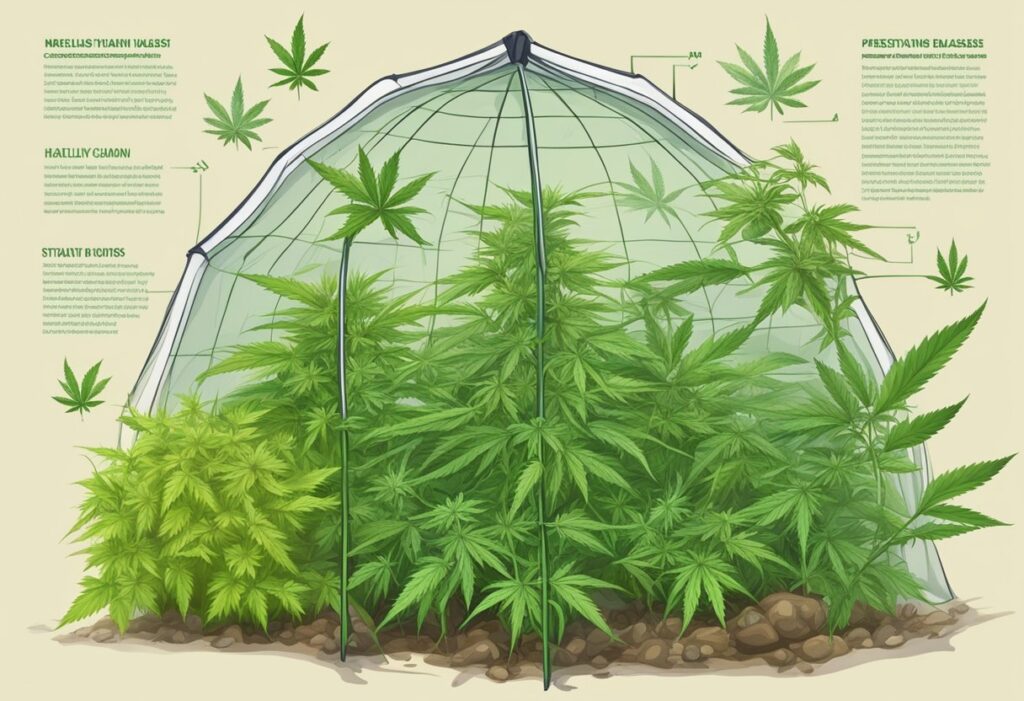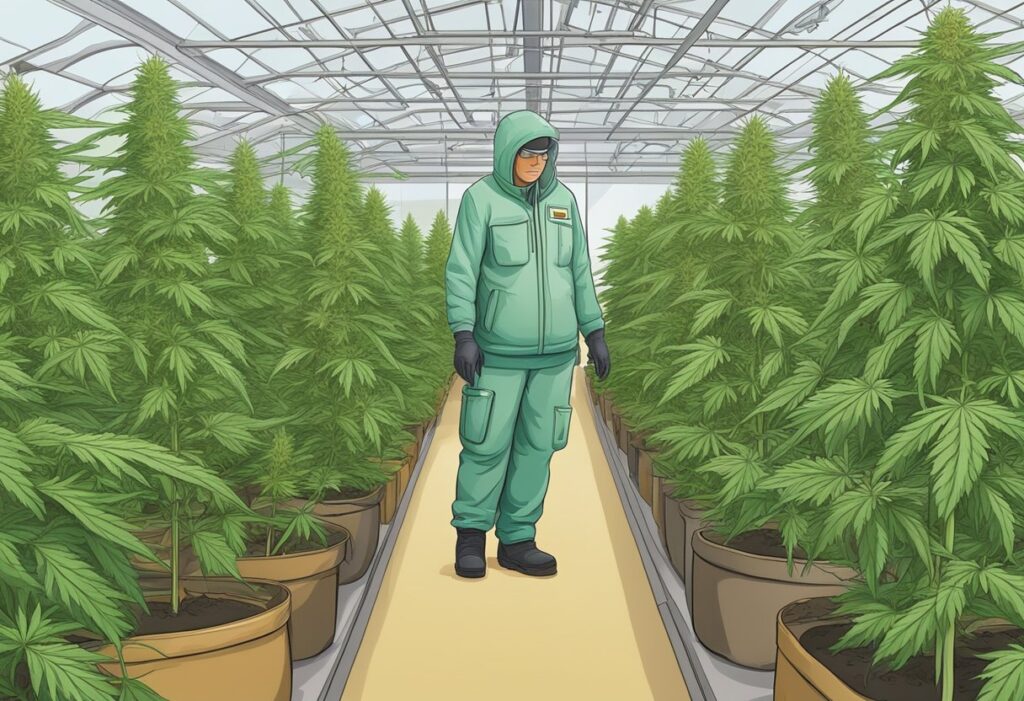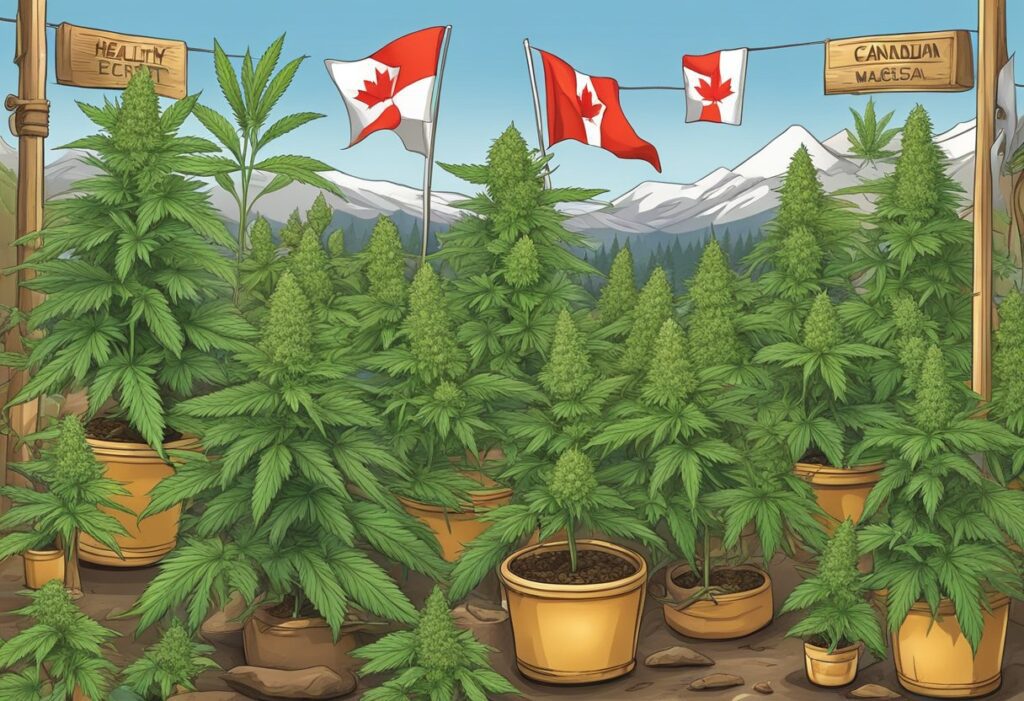
Protecting your cannabis crop in Canada is crucial to maintaining plant health and ensuring a successful harvest. Effective pest and disease management practices are vital components of sustainable cannabis cultivation. With the proper application of integrated pest management (IPM), growers have a strategic approach to reduce pesticide risk and promote healthy crops.
Integrated Pest Management or IPM is a holistic approach that combines various management strategies and practices to reduce the dependency on chemical pesticides and minimize the impact on the environment. IPM is significant in cannabis agriculture, especially considering the stringent regulations surrounding the production of this high-value crop post-legalization.
IPM is especially pertinent for indoor production systems where environmental conditions can be optimized for cannabis growth but can also favor certain pests and diseases. A well-designed IPM plan is adaptive and responsive, allowing you to manage your cannabis crop proactively rather than reactively.

In safeguarding your Canadian marijuana crops, accurate pest identification is the cornerstone of effective control. By knowing your adversary, you can deploy the most effective strategies to protect your yield.
Your cannabis plants can play host to a variety of pests including mites, root aphids, whiteflies, and thrips. Here’s how to identify and manage some of the most common ones:
It’s crucial also to regularly inspect your plants and act swiftly at the first signs of infestation.
Utilizing biological control measures can be an environmentally friendly way to manage pests. Here are some biocontrol agents you can introduce:
Implementing biocontrol methods requires careful planning and monitoring to ensure they are effective against the specific pests present in your cannabis crop. Remember to always check regulations regarding the use of biocontrol agents within Canada to adhere to legal guidelines.

Effective disease management and cultural practices are critical to maintaining a healthy Canadian marijuana crop. From deploying strategic sanitation measures to enhancing plant resilience, the following approaches are vital to preventing and countering common diseases like botrytis and powdery mildew, which can devastate your crop if allowed to take hold.
Diseases such as botrytis, more commonly known as gray mold, and powdery mildew are two of the most notorious issues affecting cannabis. Early identification is your first line of defense; look for telltale signs like spots on leaves or a white, powdery residue. To combat these diseases, consider the application of appropriate fungicides that are registered for use on cannabis in Canada.
Cultural practices like maintaining low humidity in your greenhouse can greatly reduce the risk of disease. Ensuring proper air circulation will also help keep these diseases at bay. When it comes to root diseases, like pythium, be attentive to the health of your plants’ root systems. Regular checks and maintaining a balanced nutrient supply, with a focus on essential elements such as calcium, are part of comprehensive disease management.
Sanitation is paramount in preventing the spread of disease in your cannabis crop. Always start with a clean growing environment, sanitizing tools and surfaces regularly to prevent pathogens from taking root. Weed management is also an integral part of sanitation, as it minimizes potential hosts for disease. Avoid using broad-spectrum herbicides, as these can be harmful to your crop. Instead, opt for manual weed removal or other targeted weed control practices.
To promote plant resilience, ensure your plants receive the correct balance of nutrients. A robust plant is better equipped to withstand disease pressures. Additionally, incorporate best practices such as proper plant spacing to avoid overcrowding and maintain a sanitized environment, which includes regular cleaning of irrigation systems to prevent water-borne diseases like pythium.
By implementing these disease management strategies and staying consistent with cultural practices, you protect your investment and support a flourishing cannabis crop.
You can use only certain pesticides approved by Health Canada for cannabis cultivation. To find an updated list, refer to Health Canada’s database, which reflects the current legal products for use in marijuana pest control.
Health Canada regulates pesticides through the Pest Control Products Act by evaluating scientific data to ensure they are safe and effective when used as directed. All pesticides used in cannabis production must be explicitly approved for such use.
Legal requirements dictate that pesticides must be used according to the label’s instructions. Any deviation from the label’s usage guidelines can lead to legal and safety issues. If you suspect misuse, report it to the Pest Management Information Service for investigation.
Licensed producers must integrate a pest management strategy that adheres to Health Canada’s guidelines, using approved pesticides and sanitation methods, such as the use of peroxide for microbial control during the vegetative phase and two weeks prior to harvest.
With a medical license in Canada, the number of cannabis plants you can grow depends on the daily quantity stipulated in your prescription. The Cannabis Regulations provide specific details on the plant count limits under medical authorization.
We ship and deliver world wide via USPS and various couriers.
We offer a wide range of secure and anonymous online payment options.
We care about you, our customer. Please contact us with any questions or concerns.
Find out more about the benefits of being a loyal and regular customer.
WE ARE EVERY GROWERS ONE STOP SHOP TO ACQUIRE PREMIUM CANNABIS SEEDS FOR SALE IN THE USA, CANADA AND AUSTRALIA

Farmers Lab Seeds 2024, | All Right Reserved
Seeds are sold as novelty items, souvenirs, and collectibles. They contain 0% THC. We encourage our customers to check the legislation in their Country, State, Province, and Municipality prior to purchasing items from our store. We do not provide growing information.
All seeds are sold as hemp, and lab tested under 0.3% THC. This product is not for use by or sale to persons under the age of 21. This product should be used only as directed on the label. It should not be used if you are pregnant or nursing. Consult with a physician before use if you have a serious medical condition or use prescription medications. A Doctor’s advice should be sought before using this and any supplemental dietary product. All trademarks and copyrights are property of their respective owners and are not affiliated with nor do they endorse this product.
These statements have not been evaluated by the FDA. This product is not intended to diagnose, treat, cure or prevent any disease. Individual weight loss results will vary. By using this site, you agree to follow the Privacy Policy and all Terms & Conditions printed on this site. Void Where Prohibited by Law.